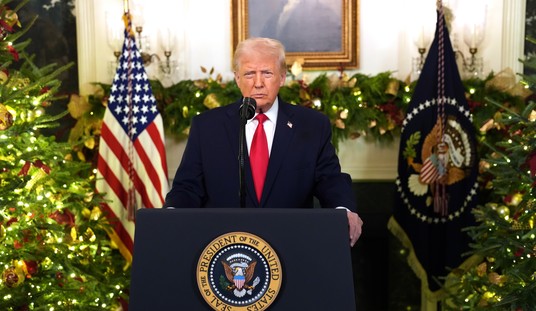This morning, I decided to drop down to my local coffee establishment for a breakfast of coffee, eggs, and some morning reading. I had a lot of new things, and pre-coffee I’m not up to making decisions, so I just brought several things to read: Peter Kramer’s Against Depression; Marianne Williamson’s The Age of Miracles; Wayne Dyer’s Change Your Thoughts, Change Your Life: Living the Wisdom of the Tao; and for a little more rigorous reading of Buddhism I brought The Dhammapada, D.T. Suzuki’s Manual on Zen Buddhism, Steve Hagen’s Meditation Now or Never, and Buddhism Is Not What You Think — great title, that — the complete works of Edgar Allen Poe and Mark Twain; Sun Tzu’s Art of War and Musashi’s Book of Five Rings; a couple of novels; some books on Ruby and Python programming; the most recent issue of Asimov’s Science Fiction Magazine; Locke’s Essay Concerning Human Understanding and Second Treatise of Government; John Stuart Mills’ On Liberty; Paradise Lost, Shakespeare’s Sonnets; and some Larry Niven.
“What, in a wheelbarrow?” you’re thinking? No, in my Kindle. Of course, it’s only about 30 percent full.
(Could someone direct me to nominations for the Eclectic Reader World Series, by the way?)
Actually, that’s not a complete catalog of everything I currently have on my Kindle — there’s only so far I’ll carry that joke with a straight face — and even that isn’t all the books I have for it. I also have a number of books — like Jonah Goldberg’s Liberal Fascism, which I wrote on some weeks ago — that are waiting for me on my stored books at Amazon. But that I deleted from memory on my Kindle, mostly just to see how I could do it.
It would be fair to say I’ve become a fan.
The Kindle is Amazon’s entry into the “e-book” market. It’s neither the first, nor in some ways the best, but it has one dramatic advantage in that it’s tied to Amazon’s amazing technical infrastructure and Jeff Bezos’s deep pockets and passion for the printed word. Physically it’s a little bit bigger than a common pocket book, a little smaller that the usual “trade paperback” — call it 5 1/2 by 8 1/2 in the custom leather cover that comes with it. Weight, a little less than a pound. (Look, if you want to have exact details, go look at the website.) The actual reading surface is about 6 inches diagonally (according to Amazon; clearly someone from the TV department was writing the copy) which makes the reading surface as tall as a 3 by 5 card held vertically, and maybe a half inch wider. Again, not far off from an old-fashioned pocket book paperback, a little smaller. The actual reading surface is “e-Ink(tm)”, which looks very much like conventional paper and is about as clear as relatively inexpensive paper printing.
I have to admit, when I first got it, I was a little put off. The text area seemed a bit small, and the physical object is a little odd. There are “next page” buttons on both the left and right edges, a “previous page” button on the left edge only, and a “back” button on the right edge that frankly isn’t all that intuitive at first — it seems to always be set to do something but it’s not clear what. There is a keyboard of tiny “chicklet” keys that are arranged to be easy to use with two thumbs if you’re adept with two-thumb typing — which I’m not — and a peculiar little scroll wheel on one side that’s used for picking from a menu. The Kindle page has a nice video demonstration by a guy with a pleasant voice and a calm manner.
For the first day, you’re going to need the calm voice, at least if you’re like me. I kept playing about with it, all the time thinking “how long can I use this before I can’t send it back?” The buttons didn’t do what I wanted, and I kept paging forward when I didn’t mean to. I suppose I needed to learn how to use a book comfortably too, but then when I learned to read, Gutenberg was just working out the whole movable type thing anyway.
After a short while, though, I caught on. Then I discovered something about it, and I began to really like the thing. In my day job, I read a lot of technical material, and a lot of that is available only as a PDF file. Call me old-fashioned (oh, go ahead, you know you want to) but I don’t like reading long documents like that on my computer screen. It makes my eyes tired. If I really need to read something like that, I’ve often sent it off to the printing shop, to be printed and bound in one of those nasty plastic comb things.
Then I have to store them, or shelve them, or throw them away.
With a Kindle, you can email the document to a special email address, and for a few cents Amazon converts it to a Kindle file, and sends it via “Whispernet(tm)” to the Kindle. (You have to be able to get cell phone reception, so that feature won’t help you much in Siberia or an elevator.) Boom, my PDF manual was there on my Kindle. I sent a couple more: boom, boom. (It doesn’t really go boom, but that’s the way it struck me). If I’d have printed those manuals, I would have about a shopping bag full of unpleasant comb-bound laser-printed books to lug around.
I was starting to like the thing.
Then, while I was writing the music industry piece for PJM, I wanted to re-read The Long Tail. I’d long ago lent my copy to someone, I didn’t know who. I could have ordered another copy, for about $18, and gotten it in one day (for another $4 shipping) … or I could push the one-click button and have it delivered to my Kindle for $10. Right now. Less than a minute later, I had it.
Oh, my. Suddenly, the whole thing began to make sense. It struck me, for probably the one hundredth time, that I really should finish reading Moby Dick. (It’s the chapter on “whiteness” that kills me. Okay. It’s white. It’s a white whale. Whiteness is, like, symbolic. I got it. Cripes.) Click, and I had it, for a couple bucks. I wanted to re-read some Poe. I could find it easily enough; the Raven is all about — but for about $3 I could have Poe’s complete works. Click. Same with Twain, and I nearly bought a complete Shakespeare — I’ve got three of them on paper already — but settled for the Sonnets for 99 cents. Delivered instantly. I could get today’s issue of the Frankfurter Allegemeine, today, for 75 cents.
I’m convinced. Send me the Kool-Aid Jeff, you’ve got a convert.
Okay, so it’s not perfect. The keyboard is nearly useless, at least to me, although I’m sure my text-message-happy niece would find it completely natural. It seems to have some issues with non-standard text. One of its handy features is that you can use it to read Wikipedia and other web sites, as well as look things up in its built-in dictionary. Nice feature, but I looked up Śūnyatā and the letters with diacriticals just flat-out thwarted it: “Śūnyatā” comes out “nyat”. A cedilla, “ç”, comes out as a regular “c”, at least in text supposed to be English. (To be fair, I’m sure that’s just a firmware issue, and Amazon will correct it eventually. But I want it now, dammit.)
The accumulation of little charges — 75 cents, 99 cents, and so on — freaked out the credit card company for a while, until they confirmed I really was making 75 cent web purchases. Worst, at least for now, is that while there’s a lot of content available for Kindle, there’s also a lot of things that still aren’t. When I began to really get into it, I thought, “Oh joy, I will have more room!” Well, yeah, but not as much as I’d thought: I still buy five or ten physical books a month, and most of the magazines I like aren’t available on it yet.
The Kindle, though, is really a first-generation device: there are already new devices coming out, with bigger “paper” and more features. The iRex iLiad is bigger, and lets you take handwritten notes — and it’s about twice as expensive. Other vendors have them as well, but none of them have the combination of the e-book reader, the wireless delivery, and the content back end that Kindle has.
The future of these things is bright, though. First of all, the price is sure to drop; electronics always does. Soon, a lot of schools will be ordering texts that can be delivered as e-books — Metro State in Denver already does. And, as publishing is more and more divorced from the costs of physically producing the physical books, it’s sure to change the publishing industry — no more advances, but no more big barriers to publication, either.
So it’s not perfect. On the other hand, as I looked at my Frankfurter Allegemeine today over coffee, before re-reading Larry Niven’s Flatlander, and looking up the 29th sonnet (“When in disgrace with fortune and men’s eyes/I all alone beweep my outcast state”) for the college girl — far too young for me, but interested in the Kindle in my hand — I have to say, it sure is pretty good.
Charlie Martin is a Colorado computer scientist and nearly-successful screenwriter who contributes to the Flares Into Darkness political blog as ‘Seneca the Younger,’ and blogs under his own name at the aggressively non-political Explorations blog.










Join the conversation as a VIP Member